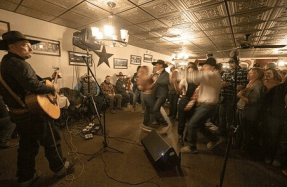THE FIRE NEXT TIME


SMOKE BLOTTED OUT THE MIDDAY SUN as firefighters rappelled from helicopters into the remote backcountry of the Salmon River Breaks in central Idaho. A small but swiftly growing string of blazes roared across the granitic walls of the river gorge. It was a late July day in 2012, and the Mustang Fire had just ignited. “I thought we were going to die,” firefighter Jonathon Golden later told NBC News.
The area is nightmarish, deadly terrain for wildland firefighters. Its canyons — deeper than the Grand Canyon — tend to fill with thick smoke and channel unpredictable, fire-stoking winds. Less than an hour after Golden’s crew landed, they were in trouble. Scattered amid smoke so thick the whirling helicopter rotors barely seemed to stir it, the firefighters unshouldered their heavy packs and fled the flames, leaving behind tools, water bottles and even a wallet. They were shaken but alive.
That aborted attack on the Mustang Fire made it clear that terrain and weather, not firefighters, would determine how long and how far the blaze would burn through the backcountry. “There was no access,” Fritz Cluff, the fire manager for the Salmon-Challis National Forest, where the fire was located, told me recently. “It was on a really ugly piece of ground.”
As the fire roared through thick stands of scaly-barked Engelmann spruce, subalpine fir and lodgepole pine, it drew closer to the small communities of North Fork and Gibbonsville, where cabins are tucked into conifer groves on either side of Highway 93. Firefighting crews prepared to defend homes by clearing brush, setting up hose lines and starting backburns, which clear out tinder on the ground. In the nearby town of Salmon, the sky was the apocalyptic orange now familiar across much of the Western U.S.
In the end, the fire spared the towns, in part because of a forest-thinning project that had started the spring before in the Hughes Creek drainage, an area of wooded canyons set between the communities and the backcountry. After years of planning by the Lemhi Forest Restoration Group, a local collaborative convened by a conservation nonprofit, thick stands of trees had been selectively logged to help protect homes. The logging didn’t leave dramatic gashes of downed trees or abrupt, clear-cut expanses; it had been designed to thin the forest, turning tightly packed clumps of overgrown trees into roomier groves that a person could easily stroll through without getting snagged.
In a sense, that’s what thinning is supposed to encourage wildfires to do: amble along the forest floor rather than brush up against tree branches and carry flames from trunk to treetop, torching entire stands and making firefighting untenable. Along the Highway
You’re reading a preview, subscribe to read more.
Start your free 30 days



